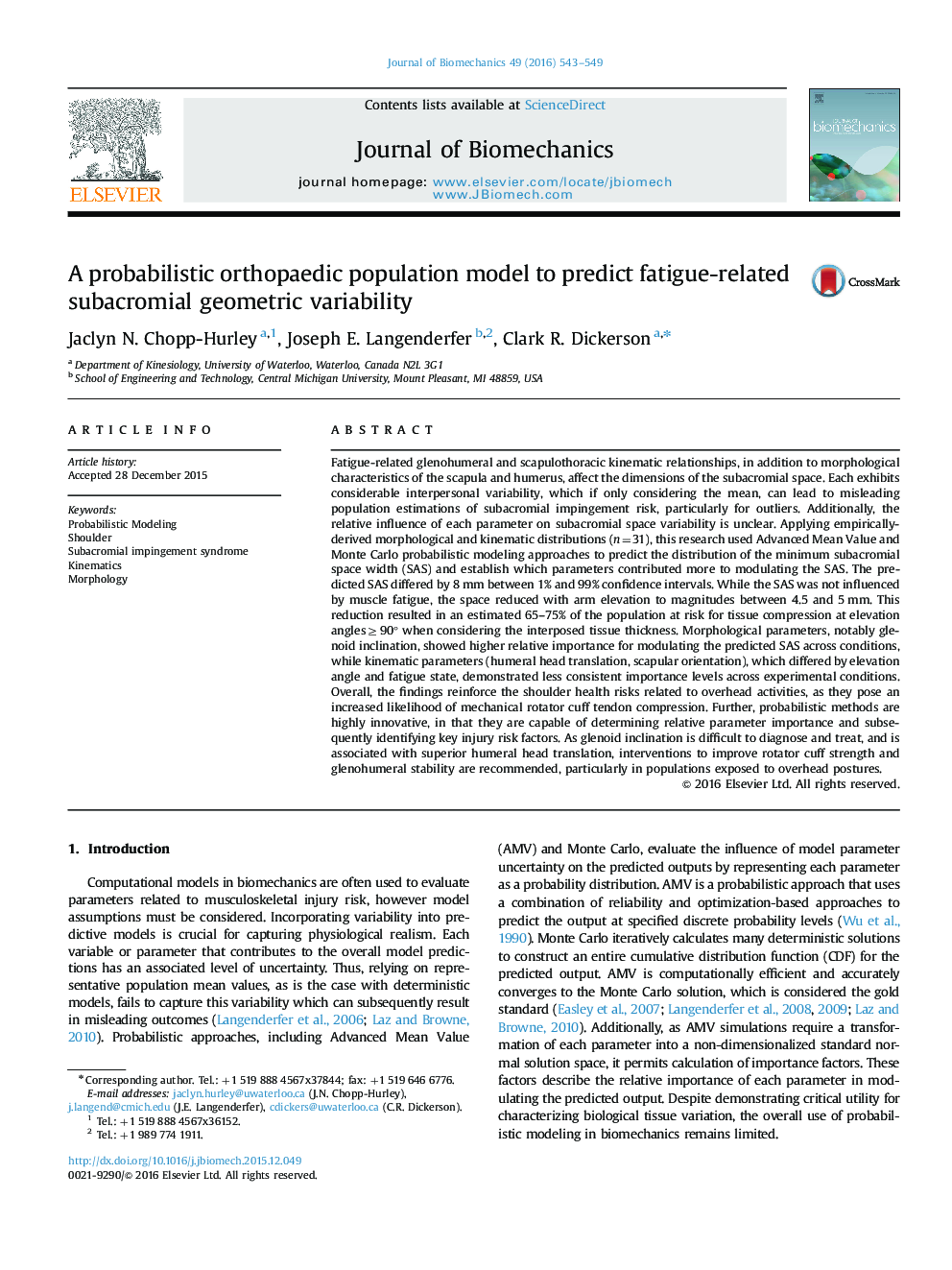| کد مقاله | کد نشریه | سال انتشار | مقاله انگلیسی | نسخه تمام متن |
|---|---|---|---|---|
| 871795 | 910201 | 2016 | 7 صفحه PDF | دانلود رایگان |
Fatigue-related glenohumeral and scapulothoracic kinematic relationships, in addition to morphological characteristics of the scapula and humerus, affect the dimensions of the subacromial space. Each exhibits considerable interpersonal variability, which if only considering the mean, can lead to misleading population estimations of subacromial impingement risk, particularly for outliers. Additionally, the relative influence of each parameter on subacromial space variability is unclear. Applying empirically-derived morphological and kinematic distributions (n=31), this research used Advanced Mean Value and Monte Carlo probabilistic modeling approaches to predict the distribution of the minimum subacromial space width (SAS) and establish which parameters contributed more to modulating the SAS. The predicted SAS differed by 8 mm between 1% and 99% confidence intervals. While the SAS was not influenced by muscle fatigue, the space reduced with arm elevation to magnitudes between 4.5 and 5 mm. This reduction resulted in an estimated 65–75% of the population at risk for tissue compression at elevation angles≥90° when considering the interposed tissue thickness. Morphological parameters, notably glenoid inclination, showed higher relative importance for modulating the predicted SAS across conditions, while kinematic parameters (humeral head translation, scapular orientation), which differed by elevation angle and fatigue state, demonstrated less consistent importance levels across experimental conditions. Overall, the findings reinforce the shoulder health risks related to overhead activities, as they pose an increased likelihood of mechanical rotator cuff tendon compression. Further, probabilistic methods are highly innovative, in that they are capable of determining relative parameter importance and subsequently identifying key injury risk factors. As glenoid inclination is difficult to diagnose and treat, and is associated with superior humeral head translation, interventions to improve rotator cuff strength and glenohumeral stability are recommended, particularly in populations exposed to overhead postures.
Journal: Journal of Biomechanics - Volume 49, Issue 4, 29 February 2016, Pages 543–549
